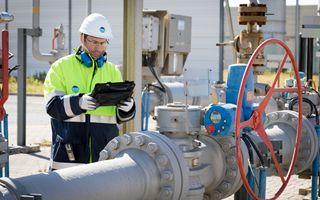(Finance) – Hydrogenone of the main alternatives to fossil fuels for hard-to-abate sectors such as industry and transport, fails to take off in Europe and Italywhere the development is very late. to 2030 the first seven EU countries by expected production capacity will not they will not even reach 50% of the target envisaged by REPowerEU equal to 10 million tons of production (to which 10 million tons of imports are added).
This is what emerges fromObservatory on the International Hydrogen Marketpresented today during the conference “The future of hydrogen: from national strategies to the global market” organized by AGICI. The event was attended by key players in the energy sector to take stock of strategies, opportunities, obstacles and characteristics of the supply chain.
On the international frontthe study analyzed over 1,900 initiatives production, transportation and storage of hydrogen, but only 510 projects, equal to 27% of the total, they are in an advanced state (operational, under construction or FID). A global framework in which Europe holds first place with 208 advanced projects.
The data reveals that i first seven EU countries for electrolysis capacity, they will have one estimated production by 2030 equal to 4.8 Mton, less than 50% of the target of production foreseen by the EU. Furthermore, to date, projects at an advanced stage would allow only 10% of this potential to be achieved.
Production plans of renewable hydrogen are characterized by a high incidence of operating costs (OPEX) and, for this reason, the incentives play an essential roleproviding fixed or variable coverage of the gap between the cost of producing the molecule and other fossil alternatives. AGICI’s analysis, at a European level, has identified seven instruments of this type, for a total endowment of 12.9 billion euros.
Even in Italy the hydrogen market is struggling to take offdespite the others 70 projects financed by EU structural funds 2021-2027, to which are added 15 IPCEI initiatives for the hydrogen supply chain. To date, the main financing instrument for national projects it is the PNRRwhich has six investment lines for hydrogen, for a total of 2.9 billion of euros. Among these, the resources already approved they amount to approx 2 billion of euros, of which the largest part is intended for Northern Italywith 693 million euros allocated and 68 projects started. Followed by the South, with 506 million euros and 56 projects, and finally the Centre, which includes 20 projects for a total of 118 million euros. In our country the criticality reported are natural technical, regulatory and economicbut above all an official national strategy is missing. And on the PNRR financing front there are stringent deadlines set for 2026, and the difficulties in starting the projects risk causing us to lose these resources.
“Hydrogen represents one of the main options for decarbonisation of the hard to abate sectors, but neither Europe nor Italy are really ready” he declared Stefano ClericiDirector of the Observatory on the International Hydrogen Market of AGICI, explaining that “the legislative and regulatory complexities generate uncertainty on the market and slow down investments”.
“Several countries have started to define a clear strategic vision about their role in the international hydrogen market, as producers, exporters or net consumers potentially importing,” he underlined Francesco EliaCoordinator of the Observatory on the International Hydrogen Market of AGICI, but “to date, hydrogen as an energy vector remains a largely unexplored option, due to very large initial and operating costs which, on the one hand, prove unsustainable for operators and, on the other hand, prevent the development of significant demand in industries and transport, which is fundamental for the start of a truly global market for the molecule”.
“Hydrogen represents a fundamental lever for decarbonization and energy security. With strategic initiatives such as the SouthH2 Corridorwhich aims to transport ‘green’ hydrogen from North Africa to Europe, Snam is the protagonist in the transition to a low-carbon future,” he said Giovanna PozziDirector H2 Project Development of Snam. adding “our goal is clear: to develop a resilient, multi-molecule infrastructurecapable of diversifying energy sources in Italy and Europe and reaching net zero in a sustainable and fair manner. Our hydrogen strategy is aimed at support the sectors most difficult to decarbonisewith experiments in the use of ‘this resource’ in production processes and the creation of hydrogen valleys to enable it along the entire value chain. A commitment also confirmed by our Transition Plan, presented a few days ago: a transparent roadmap to clearly and systematically outline the objectives for 2050, and the related actions and resources to support the Group’s energy transition and the decarbonisation of the country”.
For Lorenzo Priviteraresponsible for the development of hydrogen in the guise of A2Aone of most important applications for hydrogen it’s there mobilitynot only the heavy one, but also the light one. “These are market niches” – the manager specified – but there are various specific applications for hydrogen”. Provitera has excluding than hydrogen can sustain itself without an incentive systemas “demonstrated by the projects financed by the PNRR, which have already seen some form of Capex incentive and which today are still not seeing the light without an Opex incentive”.
